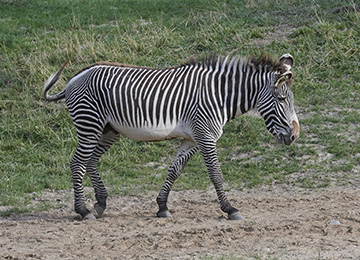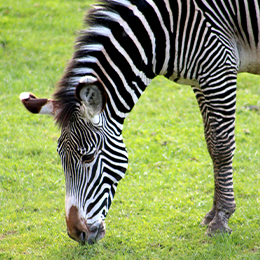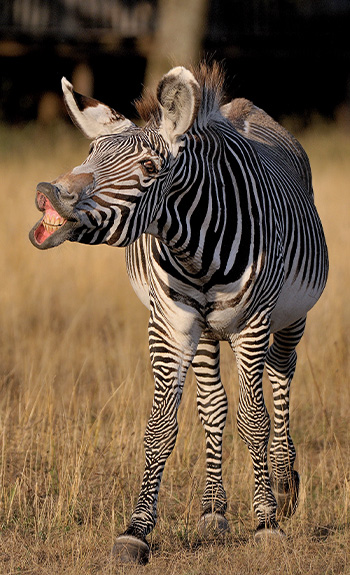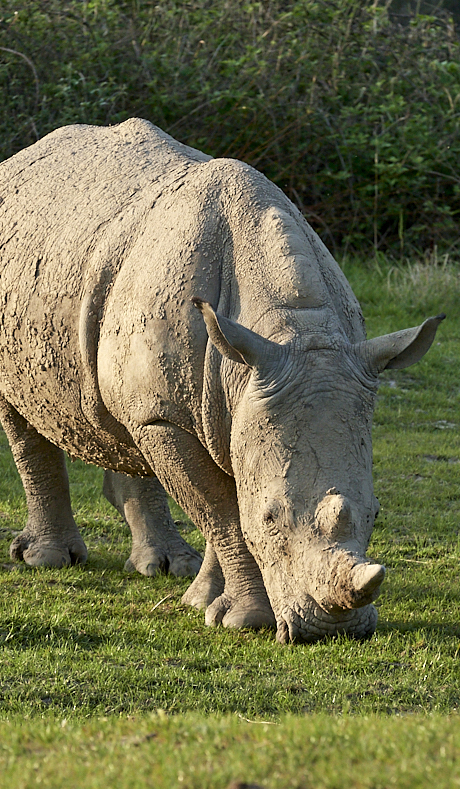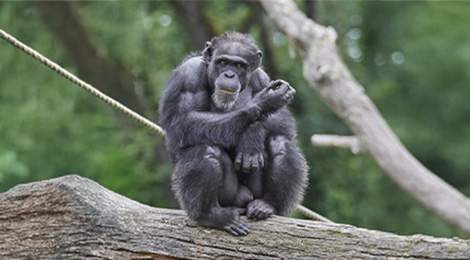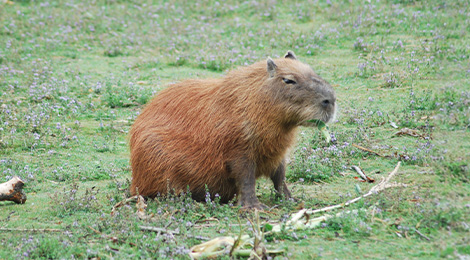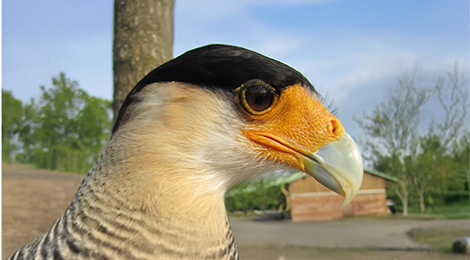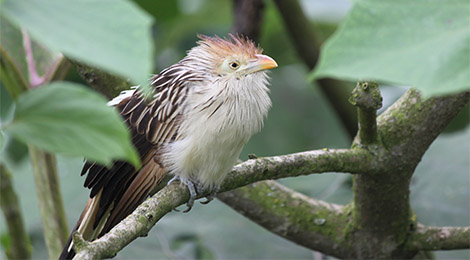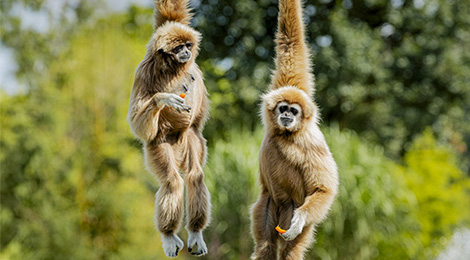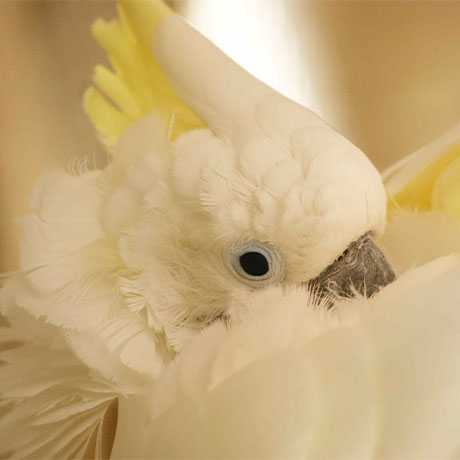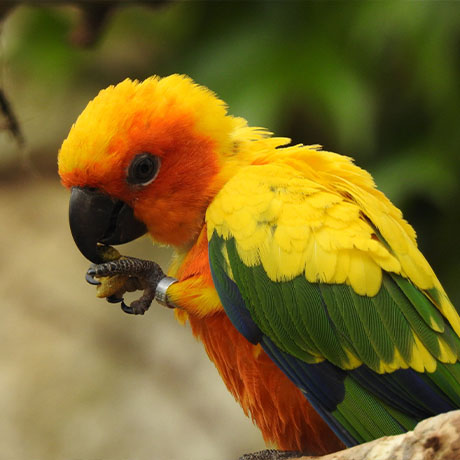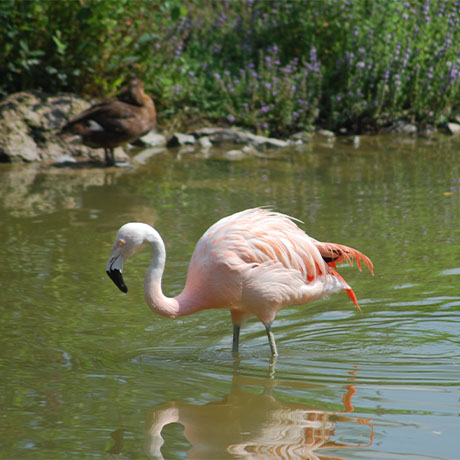Zebra of grevy do not migrate and form small and very tight-knit herds
Zebras are herbivores characterised by their black and white stripes, most of which are vertical. Female zebras are known as mares and their young as foals. There are various species of zebra, the three main ones being the plains zebra, the mountain zebra and Grévy's zebra.
They say that zebras whinny like horses, but Grévy's zebra brays, like a donkey! Grévy's zebra is also the largest of them all, and stands out from other species through its large, rounded ears and thinner stripes, which are also closer together, with around 80 vertical stripes in all. Its mane is long and stands up along its neck. The manes of foals extend the length of the back and shorten when they reach adulthood. Their tummies and areas around their tails are stripe-free, which creates an optical illusion, distorting their its bodies and making them look more imposing to predators.
Various theories have been put forward with regard to the purpose of zebra stripes, none of which has really been confirmed or refuted. In the shade during the day and at night, they pass by unnoticed thanks to their stripes, which may disrupt the vision of predators due to the strong contrast which changes as it moves. The stripes focus the light, which may afford Grévy's zebra some protection against horseflies and other external parasites. The third and final theory is that the stripes assist with temperature regulation. It is also thought that this was the first zebra to evolve after equids developed hooves.
Other species of zebra live socially in large groups and are migratory. Grevy's zebra, however, do not migrate and form small, very tight-knit herds, comprising stallions, mares and foals. They take up residence in a fairly large territory of up to 10 km². From the age of 2 to 4, male zebras live in small groups of bachelors. When they reach adulthood, stallions become solitary and do not tolerate other males during the breeding season.
Grévy's zebra live in East Africa. Originally they were found in Somalia, Djibouti and Eritrea, but nowadays they are only found in northern Kenya and a very small area of Ethiopia. They live on semi-arid plains and can go without water for 5 days.
Though protected, Grévy's zebra is still hunted for its skin. The remaining population is thought to number around 2,000.
-
HabitatSavanna, grassland
-
Food
Grass, leaves.

Grévy's zebra is so named because the first specimen described by scientists was given by the king of Ethiopia to French president Jules Grévy in 1882.
Discover his stories !
Follow the daily life of Grévy's zebras, their new life in the African Savannah, the relationships with their caretakers ... But above all, learn more about this intriguing species ...
A zoological reserve populated by Asian elephants, giraffes, lions, tigers, hippos, chimpanzees, gibbons, wolves, ostriches ... Animals evolving in their reconstituted natural environment, to discover as a family.
All animals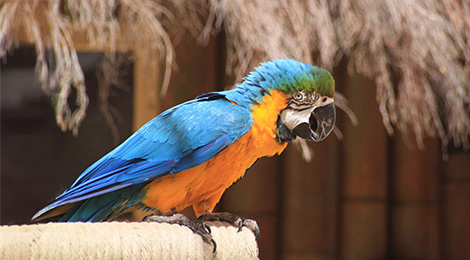
-
![]() Blue and yellow macaw Discover animal
Blue and yellow macaw Discover animal -
![]() Chimpanzee Discover animal
Chimpanzee Discover animal -
![]() Capybara Discover animal
Capybara Discover animal -
![]() Crested caracara Discover animal
Crested caracara Discover animal -
![]() Guira cuckoo Discover animal
Guira cuckoo Discover animal -
![]() Lar gibbon Discover animal
Lar gibbon Discover animal -
![]() Eurasian eagle owl Discover animal
Eurasian eagle owl Discover animal -
![Gros plan sur un Cacatoès à huppe jaune au parc animalier Le PAL en Auvergne]() Sulphur-crested cockatoo Discover animal
Sulphur-crested cockatoo Discover animal -
![Gros plan sur une Conure soleil et son plumage coloré au parc animalier Le PAL]() Sun parakeet Discover animal
Sun parakeet Discover animal -
![Flamant du Chili debout dans l'eau au parc animalier Le PAL]() Chilean flamingo Discover animal
Chilean flamingo Discover animal



